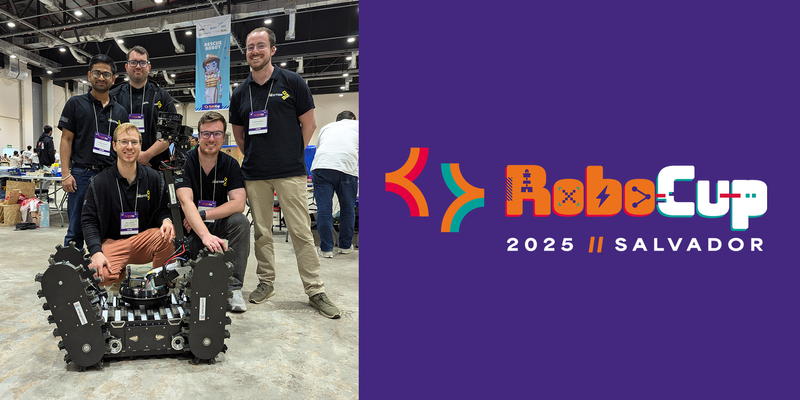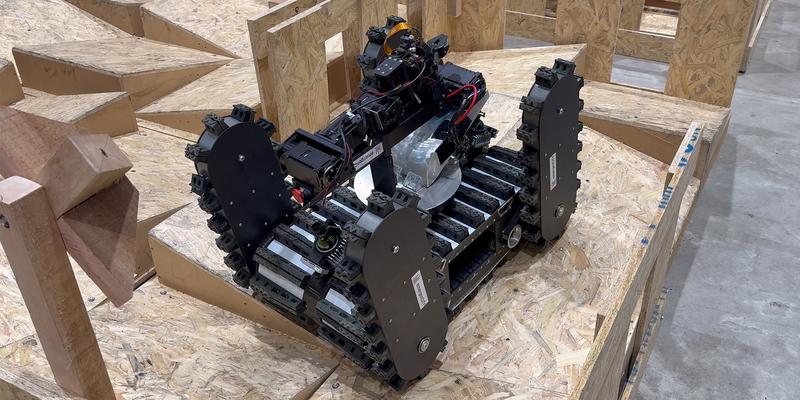Rescue Robot Athena participates in the RoboCup 2025 in Brazil
Team Hector tests new version of their rescue robot at the world’s largest competition for robotics
Team Hector tests new version of their rescue robot at the world’s largest competition for robotics

This year, Team Hector from TU Darmstadt once again took part in the RoboCup, the world’s largest robotics competition. Around 250 researcher and student teams from over 30 different countries competed in various disciplines from July 15 to 21 in Salvador, Brazil. With the support of emergenCITY, Aljoscha Schmidt, Dishant, Jonas Süß, Marek Daniv and emergenCITY-Wimi Stefan Fabian competed for Team Hector with their robot Athena in the Rescue League category.
In the Rescue League, the rescue robots put their skills to the test in rough environments. In various arenas, the robots first have to complete a specific course as many times as possible within ten minutes. The arenas simulate difficult terrain in rescue operations and are very demanding for the robot’s hardware. The robots then have to complete ten minutes of challenging inspection and manipulation tasks. For example, pipes have to be inspected from different angles, valves turned, buttons pressed and a small metal pin inserted precisely into several drill holes.
“The competition offers us the unique opportunity to test our system in an environment outside the laboratory, over which we have no control,” says Stefan Fabian.

Team Hector competed this year with a completely updated rescue robot, which was designed and assembled from scratch by the TU students and Stefan Fabian. The focus of the improvement lies on developing assistance and autonomy functions. The group only completed Athena in this form shortly before the competition, so the robot had its first test at the RoboCup. The main focus was therefore on putting it through its paces to see what works and what still needs to be improved. In the semi-final, the rescue robot broke a wheel on the stairs with obstacles, which is why Team Hector leaeve had to abandon the competition early.
“On the whole, we are very satisfied with how the rescue robot performed. However, we have also learned some valuable lessons and will, for example, revise the shape of our profiles on the belts of the wheels again based on the knowledge we have gained,” summarizes Stefan Fabian.
The robot is a very strong upgrade to the previous one: It incompasses a much more efficient and powerful drive, greater sensor coverage and a manipulator arm that is more than twice as long, which Team Hector would also like to use to explore autonomous assistance functions for manipulation and inspection in the future.